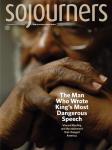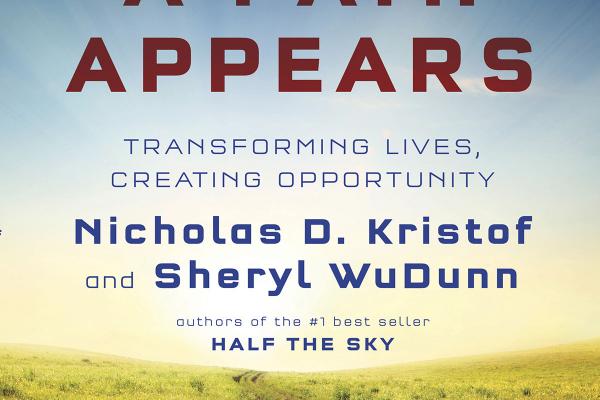IT’S EASY to lose heart when tackling the painful challenges we live with—poverty, racism, violence, sex trafficking. We volunteer and donate our time and money, but do those efforts really make a difference?
Nicholas D. Kristof, a New York Times columnist, and Sheryl WuDunn, a former Times reporter who works in finance, had the same question; A Path Appears is the result of their investigation. The husband-and-wife team canvassed the giving world, interviewing socially minded people working as individuals or in community with nonprofits, corporations, for-profit organizations, and everything in between. Turns out millions of lives are being transformed next door and across the globe—including our own.
Bernard Glassman, for example, is an aeronautical engineer who wanted to do something about homelessness. After researching the issue for six months, he decided jobs were the most urgent need and started Greyston Bakery in Yonkers, N.Y., a for-profit company whose mission is to employ homeless men and women.
Danone, a large food company that includes brands such as Dannon and Stonyfield, worked with Grameen Bank founder Muhammad Yunus to develop a yogurt that would reduce malnutrition among Bangladeshi children. The endeavor also provided jobs for women who sold the yogurt. The project experienced multiple setbacks but also successes—because all the players sought creative solutions to malnutrition and were willing to test them.
This latter point reflects a growing trend Kristof and WuDunn see among charities and nonprofits—relying on evidence rather than intuition for what works and what doesn’t. “Every aid group in the history of the world has claimed that its interventions are cost effective,” they write, but those evaluations are often “as rigorous as those of grandparents evaluating their grandchildren.”
They cite the work of researchers such as Esther Duflo, an economist who heads the Poverty Action Lab at the Massachusetts Institute of Technology. She and her colleagues are developing tools to measure impact and cost effectiveness and using them to evaluate everything from clean cookstoves to microfinance projects. Organizations such as Evidence Action and the Coalition for Evidence-Based Policy help further this work by highlighting or investing in programs whose effectiveness has been proven in randomized control trials.
“If it’s important for businesses to be meticulous in planning a new business line,” Kristof and WuDunn write, “it’s even more critical for an aid organization or donor to rely on careful evidence to plan the best way to fight malaria or educate children.”
The authors also look at the science behind why giving is good for us, interviewing neuroscientists Ulrich Mayr and William T. Harbaugh about what happens in the brain when we donate to a good cause. Other research points to the physical benefits of giving—lower blood pressure, improved physical and mental health—as well as the emotional benefits. Giving can be a source of joy.
“[T]o help others isn’t a heroic burden but a transcendent source of fulfillment in our busy, often materialistic lives,” Kristof and WuDunn write. “There are few more selfish pleasures than altruism.”
The book ends with concrete suggestions for plunging in—find an issue and research it, volunteer, get involved—and then more specific actions readers can take in 10 minutes. Those are followed by a list of gifts people can make in someone’s name and, finally, a set of organizations the authors find effective, including those they discuss in the book.
Kristof and WuDunn are honest about the challenges—poverty is complex, and helping people is harder than it looks. There is no single way to solve these problems. But incremental progress works—in fact, that’s how most change happens.

Got something to say about what you're reading? We value your feedback!
